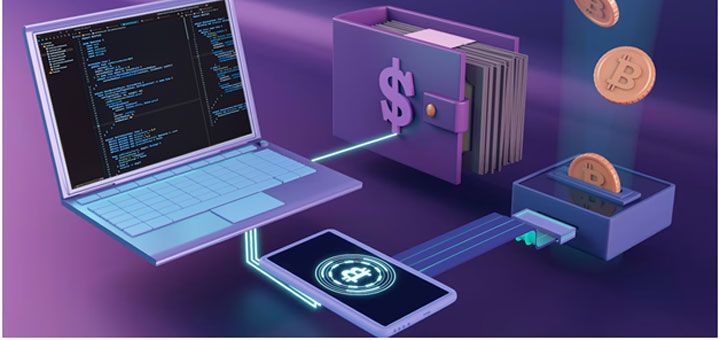
Software development is a complex process which requires a series of complex strategies, stages, and phases. Again, software security is one of the most critical aspects of every development phase. Considering the recent outpouring of cyber attacks, and data thefts, because of susceptibilities in software. In fact, according to a survey, nearly 66% have faced cyber attacks in the past year. Thus developers and software development companies must practise secure development practices, as well as the latest tools and techniques to combat malicious attacks and data thefts.
The aim is to follow best practices for software development to lower the risk of security threats, and vulnerabilities, and protect it from hackers, and phishers while maintaining user privacy. In today’s time privacy and security are the prime concerns of every business. Thus, even the best of the AI development company must pay attention towards the security and privacy of the software solutions. Thus, it is crucial to look into safe practices while building software.
In this article, we are going to discuss in detail the best practices to deliver secure software solutions. And how you can manage security in software development. So let’s begin with the discussion.
Most Common Security Threats in Software Development
But before we discuss the way to secure software, we need to first understand the most common security risks in software development. These days most software applications are built for embedded systems, finance and banking services, and mobile devices. However, mostly it is missed and not given much importance, that most of the apps and software are designed without giving much importance to security.
Besides, even if best practices are being followed, the security of the software can still be at threat. Here are some of the most common security risks associated with the software:
Cloud Security
There has been growing utilisation of cloud computing, which is why ensuring security for cloud-based apps is crucial. Cloud-based applications are vulnerable to a wide range of security attacks, especially the ones that target the cloud infrastructure, the apps, and the information stored in the cloud.
Poor Coding
It is again one of the most common reasons for security attacks. Software with badly written code is difficult to maintain security and is easier to hack. Often this happens when good coding practices such as input validation, error management, safe storage, and securing coding practices are neglected.
Problems with Third-Party Frameworks & Libraries
Most of the applications use third-party frameworks and libraries. It can many times add security threats and vulnerabilities to software solutions. A security flaw in one of these can cause vulnerability in the entire application.
Not Updating the Software
If you do not update the software application or if the software is not being maintained by the team, then there are high chances of security threats. Outdated software has high vulnerabilities, and once the hackers find out the susceptibilities, the hackers can easily exploit the important information.
Unsafe Passwords
Passwords are often the most common ways for hackers to exploit security, and steal data and information. The hackers can easily get details by decrypting the password using various techniques like brute force attacks etc. Thus it is important to use strong passwords for safety purposes.
Best Practices to Manage Security in Software Development
With the advancement in technology software and tools are improving, however, even attackers are getting better. Thus developing secure software is quite challenging, but certainly the need of the hour. It is critical to follow best practices in software development to keep security threats and attacks at bay. So, here we have a list of top software development practices that one needs to follow, in order to avoid cyberattacks and data thefts.
Make Security Your Topmost Priority Right from the Start
Security should not be your concern after something happens, in fact, it should be your priority right from the beginning. Security starts with the planning and requirements, so it is important to keep a check on the vulnerabilities that may arise at each stage of software development. Thus it is important to assess the security while making any changes, adding new functionalities later.
Notably Secure Software Development Lifecycle (SFDL) is the best practice to develop secure software solutions. It is the process that takes into consideration the security risks involved at each software development stage. And works on implementing the right security measures to avoid security threats.
Code Reviewing to Assess Security
Code reviews allow developers to find out and fix valid security risks and avoid common mistakes. Having said that, a secure design is also an important part of the security assessment process. While for developers while writing code, try to keep it as short as possible. Also, it is important to test your code and write unit tests for all of the areas that may bother you.
Also in case of any code changes, you need to go back and check if the changes have caused any vulnerabilities or security issues.
Use Libraries and Frameworks that are Well-Maintained
Again, it is always a best practice to use libraries and frameworks that are well-maintained and popular. Especially avoid newer libraries and frameworks that aren’t popular yet. Popular frameworks and libraries have fewer security threats
Also utilising open-source components can help in better management of the software. Also using secure libraries and frameworks can lower the risk of a potential attack on your application. Thus developers need to identify the popularity of the frameworks and libraries before using them in their software applications.
Follow Secure Coding Guidelines and Standards
Managing secure software development practices starts with understanding and practising safe coding guidelines and standards. The software development company must follow best practices, and consensus considering the latest coding standards and guidelines.
Secure coding standards can facilitate improved design principles within the development team, as a result, it reduces the vulnerabilities associated with the software. Also by giving standards guidelines and restrictions on how the code needs to be written, teams can ensure the outcomes are secure.
Threat modelling is a popular technique that software developers can utilise to manage security during the software development process. Threat modelling is the technique that finds out risks by looking out at the specific data and examining what might be imprecise within each flow.
Password Hashing
Weak passwords are often the major cause of security attacks. Thus in many cases, password hashing can be useful in protecting data and avoiding data thefts. To keep passwords secure, never use plain text. Using password hashing can help create unique strong passwords that can be kept in the database.
Encryption
All of the data must be encrypted and in transit and at rest including the database storage, file storage, cookies, sessions, and so on. Encryption is the best way to maintain the privacy of the data of the users on the network, where any node can be attacked, and can have access to the entire network.
Penetration Testing
Penetration testing uses automation to identify any security risks and loopholes in your software. You can hire a penetration testing team and check for vulnerabilities and possible threats in the software.
These testers use the same tools as hackers to check how safe your software is from hackers. Businesses need to do some sort of penetration testing at least once in 2 months.
Secure DevOps Practices
Once you start managing the security of the software and utilising best practices, it is important to integrate them into your DevOps system. Thus the entire software development team will be aware of the security guidelines while developing the software.
This allows the team to identify and mitigate any security risks right at the beginning of the development process. Thus secure DevOps practices are also a crucial part of managing secure software development and eliminating bugs.
Final Words: Manage Secure Software Development
One of the most critical aspects of software development is maintaining security throughout the development process and even after. Having said that, hacking, data theft, and cyberattacks are becoming common practices. Thus it is crucial to be robust software development that integrates the highest security standards and guidelines. Not only must the software development team be aware of the latest security guidelines, but it is also your responsibility to conduct security training awareness for better understanding.
Significantly, software development and its security is a never-ending process. It is under constant scrutiny and is constantly evolving. Therefore, it is important to keep yourself up-to-date, and always stay one step ahead of the hackers.





